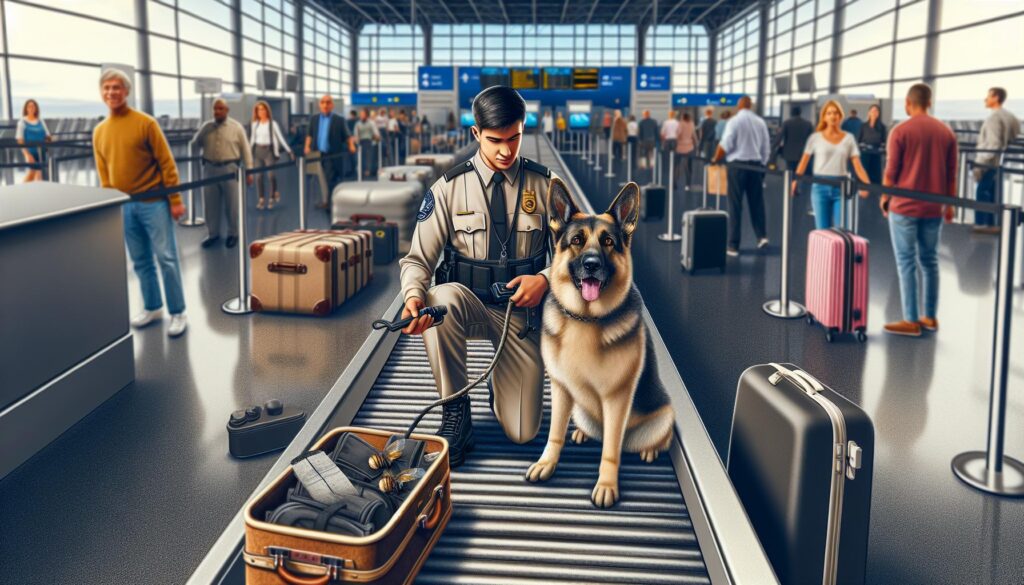I’ve always been fascinated by the incredible abilities of drug-sniffing dogs. Their noses are so powerful they can detect substances most of us wouldn’t even notice. But when it comes to nicotine vapes, things get a little more complicated. With vaping becoming more popular, especially among younger people, it’s natural to wonder if these highly trained dogs can pick up on the scent of nicotine.
The truth is, drug dogs are trained to detect specific odors, usually illegal drugs or explosives. So, does nicotine fall into their skillset? If you’re curious about how these dogs work and whether they can sniff out your vape, you’re not alone. Let’s dive into the science behind their noses and what they’re actually trained to detect.
What Are Drug Dogs Trained To Detect?
Drug dogs are trained to identify specific odors linked to illegal substances. Their training typically focuses on substances such as marijuana, cocaine, heroin, methamphetamine, and MDMA. Law enforcement agencies prioritize these drugs due to their association with criminal activity.
Explosives, including TNT, C4, and dynamite, are also part of the training programs for some detection dogs. This specialization is critical in preventing threats in public spaces and transportation hubs.
Currency, particularly when hidden during smuggling attempts, can be detected by dogs trained in financial crime investigations. They focus on the scent of ink and paper used in specific currencies.
Human scent, used in tracking, helps in locating missing persons or suspects. Dogs in this category identify unique scents from skin cells or clothing.
Tobacco and alcohol appear in the scope of some programs, especially when targeting underage use or smuggling. However, training in this area is less common compared to illegal drugs and explosives.
Can Drug Dogs Smell Nicotine Vapes?
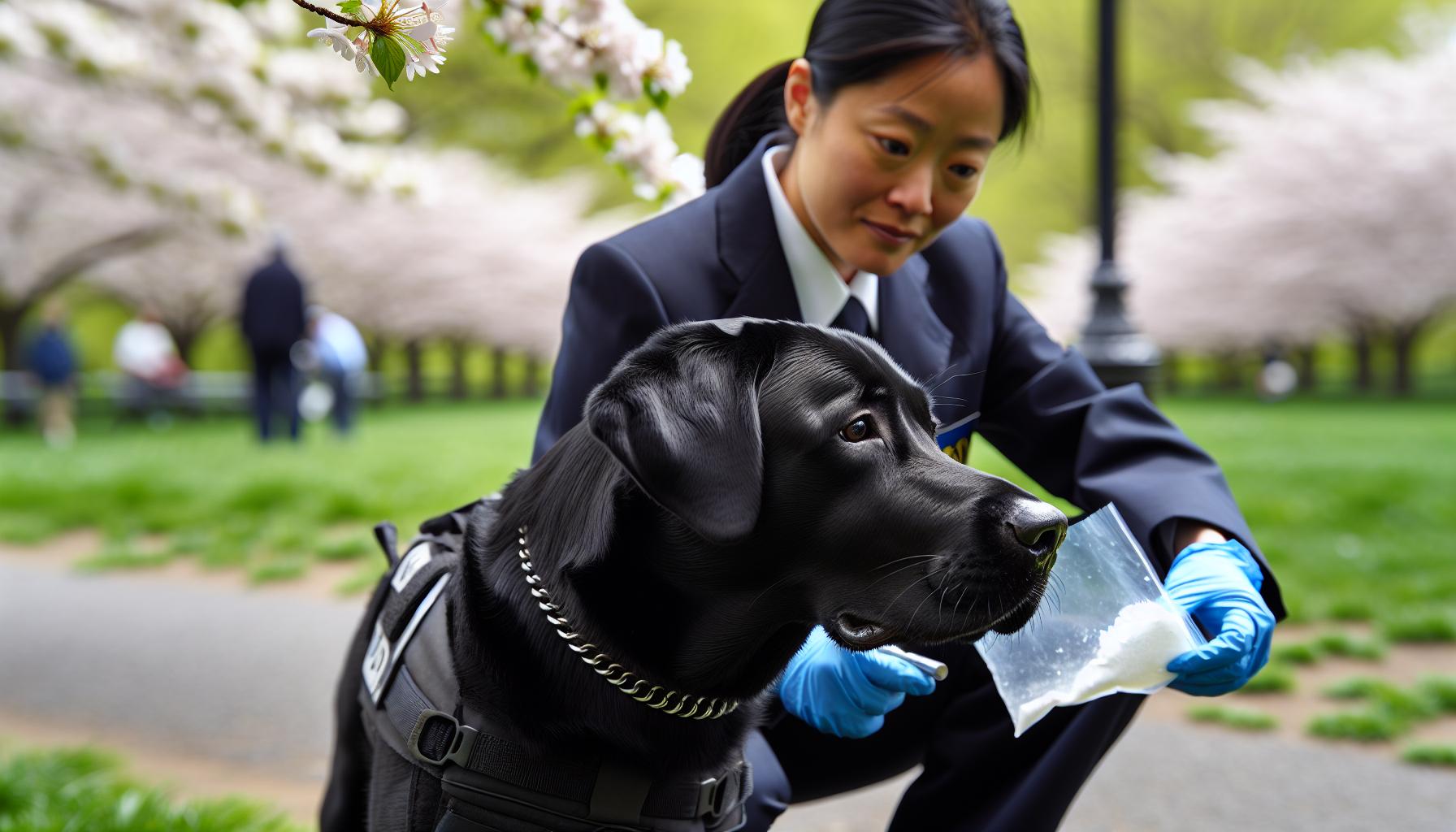
Drug dogs possess a highly advanced sense of smell, capable of identifying specific substances when properly trained. Whether dogs can detect nicotine vapes depends largely on their training and the chemical qualities of the vape.
Understanding How Dogs Detect Scents
Dogs rely on approximately 300 million olfactory receptors in their noses to detect and differentiate scents. They can separate individual chemical compounds within a mixture, making them highly effective for detection tasks. For instance, dogs can isolate the scent of THC within cannabis products or recognize residual narcotics on objects.
However, the detection of nicotine from vapes involves unique variables. Vapes emit aerosolized nicotine, which often mixes with flavor compounds and carrier substances like vegetable glycerin or propylene glycol. For detection, drug dogs must be trained to associate the nicotine compound within these aerosols with a reward system.
Challenges In Detecting Nicotine Vapes
Several factors limit a drug dog’s ability to detect nicotine vapes. Firstly, nicotine detection isn’t a priority in standard training programs since most dogs are trained to identify illegal drugs or explosives. Training a dog to recognize nicotine would require time and resources that agencies might allocate elsewhere.
Secondly, vape aerosols dissipate quickly and leave minimal residue, making detection harder. Unlike solid or powder substances that persist on surfaces, aerosolized nicotine fades rapidly, reducing scent strength. If dogs aren’t specifically trained for residual nicotine, their ability to signal the presence of vapes may be unreliable.
Factors That Affect Detection
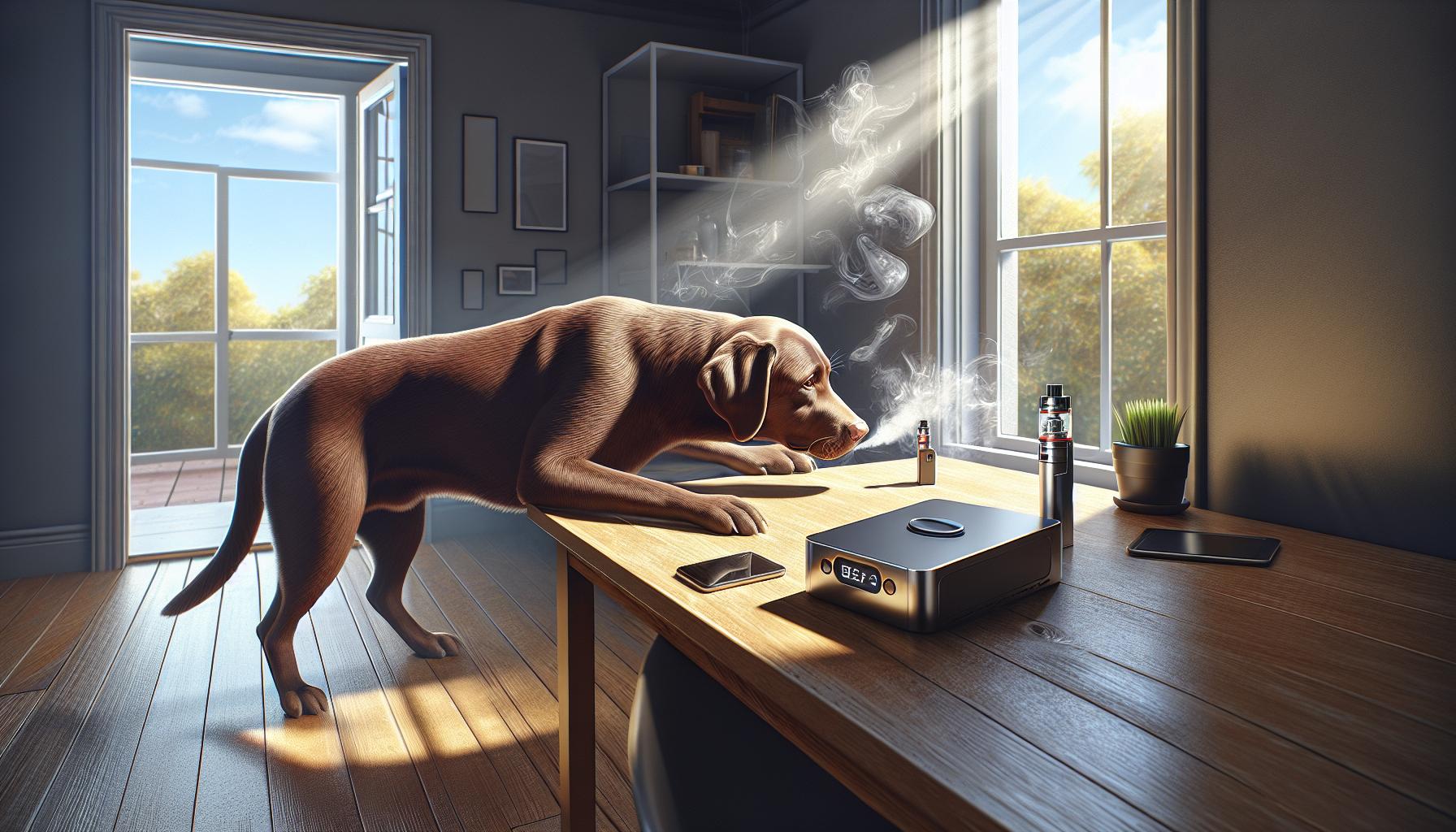
Several factors can influence a drug dog’s ability to detect nicotine vapes. These factors include the design and composition of vape devices and environmental conditions that affect scent propagation.
Vape Device Design And Composition
The design and materials of vape devices impact their detectability. Plastic or metal casings can contain residual nicotine traces, but these residues are often minimal unless the device is heavily used. The composition of vape liquids also plays a role. Nicotine is typically mixed with flavor additives, propylene glycol, and vegetable glycerin, which dilute its scent profile. Detecting this diluted mixture requires dogs to differentiate between multiple overlapping odors. Devices with disposable pods versus refillable tanks may further alter nicotine residue levels, impacting the ease of scent recognition.
Environmental Influences
Environmental factors significantly affect how scents disperse and linger. Airflow in open or ventilated areas can dilute vape aerosol particles, making detection more challenging. Conversely, confined spaces like vehicles or small rooms may concentrate the scent, allowing dogs to identify residual nicotine traces more easily. Temperature and humidity also play a role. High humidity can enhance scent retention on surfaces, while extreme heat may accelerate the evaporation of nicotine residues, decreasing their detectability.
Real-World Scenarios And Drug Dog Effectiveness
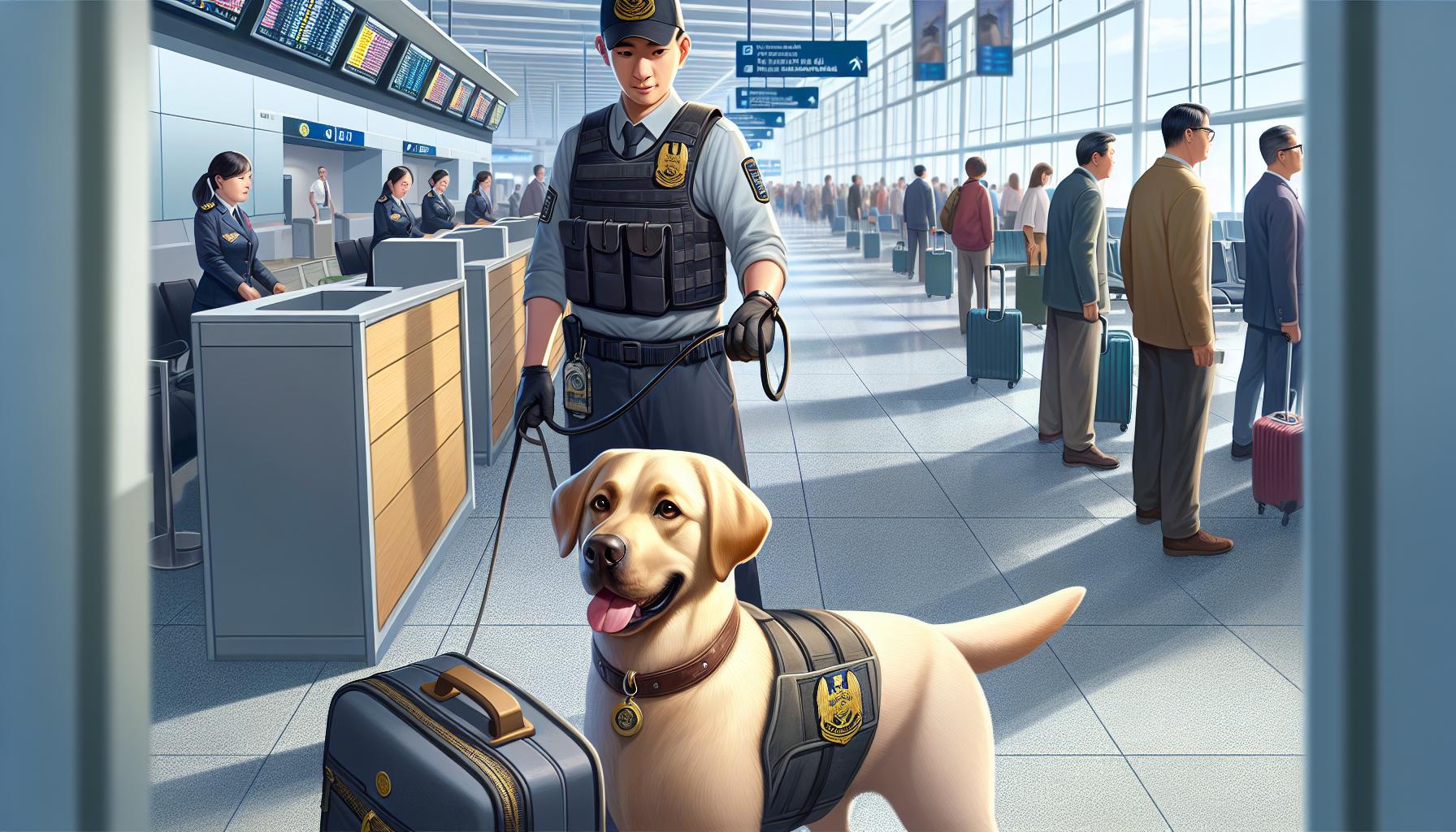
Drug dogs play pivotal roles in environments like airports, border checkpoints, schools, and public areas. Their effectiveness in detecting nicotine vapes depends on training and external conditions.
Airport And Border Security
Customs agencies deploy drug dogs across airports and borders to identify narcotics, explosives, and sometimes smuggled goods. These dogs excel at detecting substances they’re trained for, like marijuana or cocaine. Nicotine vapes, however, often escape detection unless the dogs receive specific training for nicotine recognition. Factors like the dense mix of odors in luggage or airflow variations within transit areas also complicate scent identification. Consequently, authorities usually prioritize illicit drugs and contraband over nicotine unless enforcement policies target tobacco smuggling.
School And Public Spaces
Drug-sniffing dogs are occasionally used to discourage vaping in schools and detect nefarious substances in public venues. In schools, administrators may bring dogs to identify concealed drugs, aiming to curb illegal activity among students. Nicotine vape detection is less common since training for such purposes isn’t widespread. Public spaces with high foot traffic introduce more environmental variables—competing scents, open-air conditions, and rapid scent dissipation—that reduce dogs’ reliability in identifying diluted nicotine traces. Enforcement efforts centered around vapes often rely more on visual inspections and technological tools over canine detection.
Myths And Misconceptions
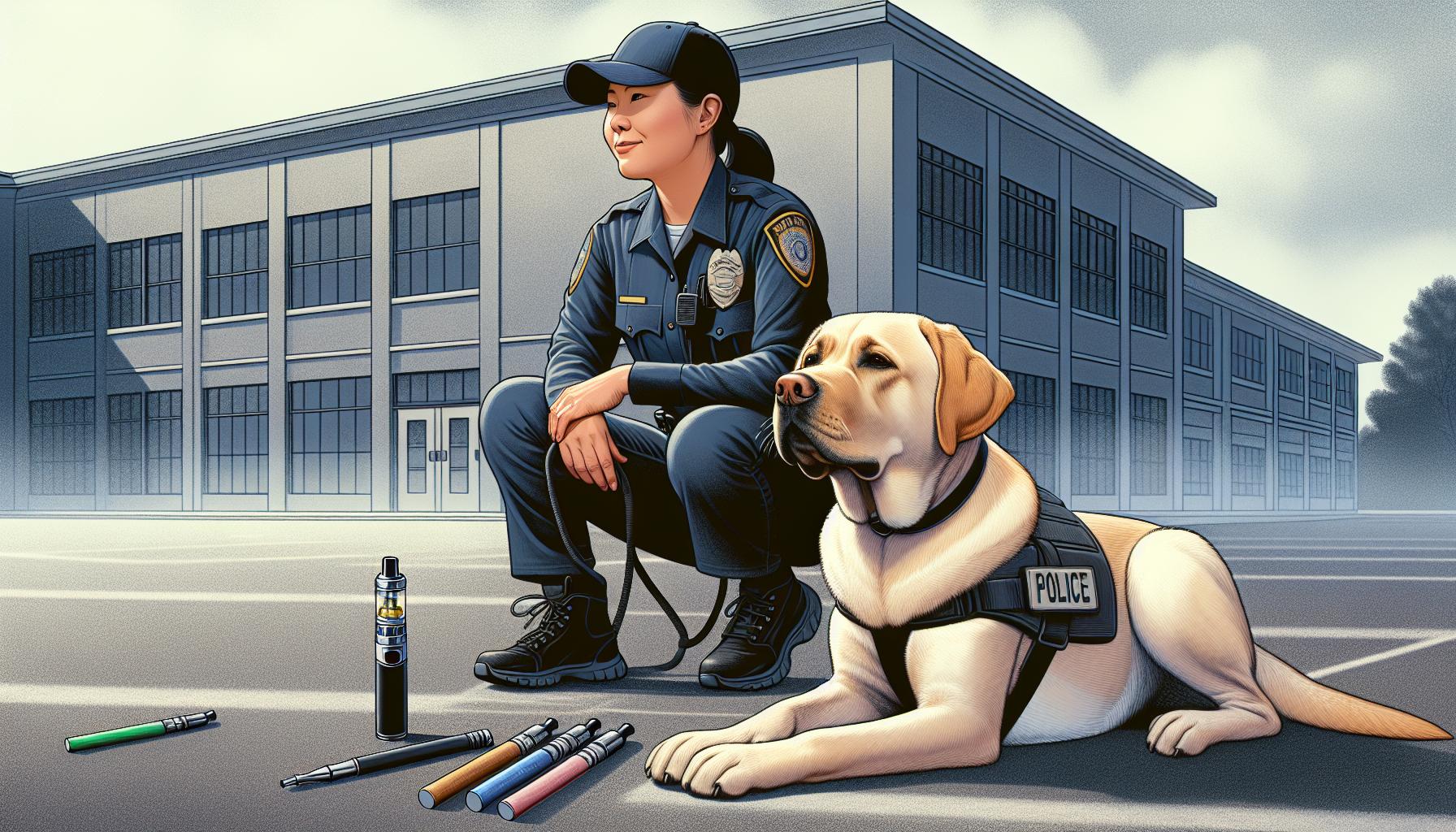
Certain myths surrounding drug dogs and their detection capabilities often create confusion. Many people assume drug dogs can automatically detect nicotine vapes without specialized training. This misconception arises from the widespread belief that these dogs can smell everything in their environment. While their olfactory senses are extraordinary, they are only effective for substances they’ve been trained to recognize, which usually excludes nicotine.
Another common misconception is that vape aerosols leave strong, long-lasting scents that dogs can easily detect. In reality, vape emissions dissipate quickly, and the residue left behind is often too minimal to trigger a detection response. Unless the dog undergoes targeted training for residual nicotine, identifying vapes as a priority focus is unlikely.
Some believe drug dogs are intentionally trained to detect nicotine in schools or public spaces. While it’s true that efforts to curb youth vaping are rising, training dogs to detect nicotine is uncommon due to resource limitations and enforcement priorities. Most dogs are trained for substances with broader legal and public safety implications, such as narcotics or explosives, leaving nicotine detection as a low priority.
Finally, there’s a myth that dogs can be confused by the scent combinations in vape devices, mistaking them for illegal substances. Dogs differentiate scents with remarkable precision when properly trained, so confusion occurs only under circumstances where illegal substances are actually present or if the vape has absorbed odors from illicit drugs.
Conclusion
While drug dogs possess incredible olfactory abilities, their effectiveness depends entirely on their training. Nicotine vapes often fall outside the scope of their detection priorities, making it unlikely for most drug dogs to identify them unless specifically trained. Factors like the composition of vape liquids, environmental conditions, and limited residue further complicate detection.
The misconception that drug dogs can automatically detect everything, including nicotine vapes, stems from their impressive reputation. However, their focus remains on substances with greater legal and enforcement significance. As vaping continues to rise, especially among younger demographics, it’s clear that addressing this issue requires more than just relying on canine detection.
Frequently Asked Questions
Can drug-sniffing dogs detect nicotine in vapes?
Drug-sniffing dogs can detect nicotine if they are specifically trained for it. However, most dogs are not trained to identify nicotine because law enforcement focuses on detecting illegal substances like drugs, explosives, or smuggled items. Detecting nicotine from vapes is challenging due to the diluted and rapidly dissipating scent of vape aerosols.
What substances are drug-sniffing dogs typically trained to detect?
Drug dogs are trained to identify substances like marijuana, cocaine, heroin, methamphetamine, MDMA, and sometimes explosives or smuggled currency. Training for nicotine or alcohol detection is less common as it is not a high enforcement priority.
Why is detecting nicotine in vapes difficult for dogs?
Vapes emit aerosolized nicotine mixed with flavorings and carrier substances, which dilute the scent. The aerosols dissipate quickly and leave minimal residue, making it hard for dogs to detect nicotine unless they are specifically trained for it.
Are drug-sniffing dogs used in schools to find vapes?
Yes, drug-sniffing dogs are sometimes used in schools to discourage vaping and detect illicit substances. However, most are not trained to specifically detect nicotine from vapes, as their focus is usually on illegal drugs.
Can the design or composition of a vape device affect detection?
Yes, the materials and design of vape devices can influence detection. Plastic or metal casings often retain minimal nicotine residues, and the composition of vape liquids further dilutes scent traces, making it harder for dogs to identify.
Does environmental context impact a dog’s ability to detect vapes?
Environmental factors like airflow, temperature, and humidity significantly affect a dog’s scent detection. In high-traffic public areas or enclosed spaces like airports, scent dispersion can make nicotine detection even more challenging for dogs.
Are all drug-sniffing dogs trained to detect vaping products?
No, not all drug-sniffing dogs are trained to detect vaping products. Most dogs are trained for substances with significant legal implications, such as narcotics or explosives. Vaping products, particularly those containing nicotine, are not a common focus of detection training.
Is training drug dogs for nicotine detection a priority?
Training dogs to detect nicotine is not a priority for law enforcement or security agencies. Resources are often allocated to train dogs for identifying illegal drugs, explosives, or other high-risk substances that pose greater public safety concerns.
Do vape aerosols leave strong, detectable scents for dogs?
No, vape aerosols emit diluted scents that dissipate quickly. The minimal residue left behind is challenging for dogs to detect unless they undergo specialized training for residual nicotine recognition.
Are there common misconceptions about drug dogs detecting vapes?
Yes, some believe drug dogs can naturally detect all substances, including nicotine, without training. Others assume vape emissions leave strong, lasting scents. In reality, dogs are only effective for substances they are trained to recognize, and vape scents tend to dissipate too quickly for reliable detection.
